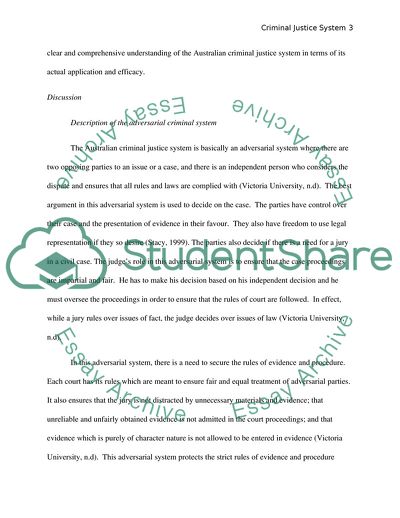Cite this document
(The Criminal Justice System Coursework Example | Topics and Well Written Essays - 2500 words - 1, n.d.)
The Criminal Justice System Coursework Example | Topics and Well Written Essays - 2500 words - 1. https://studentshare.org/law/1755191-when-all-is-said-and-done-the-current-criminal-justice-system-is-about-as-fair-and-effective-as-we-can-reasonably-expect-comment-on-this-with-reference-to-strengths-andor-weaknesses-of-the-system
The Criminal Justice System Coursework Example | Topics and Well Written Essays - 2500 words - 1. https://studentshare.org/law/1755191-when-all-is-said-and-done-the-current-criminal-justice-system-is-about-as-fair-and-effective-as-we-can-reasonably-expect-comment-on-this-with-reference-to-strengths-andor-weaknesses-of-the-system
(The Criminal Justice System Coursework Example | Topics and Well Written Essays - 2500 Words - 1)
The Criminal Justice System Coursework Example | Topics and Well Written Essays - 2500 Words - 1. https://studentshare.org/law/1755191-when-all-is-said-and-done-the-current-criminal-justice-system-is-about-as-fair-and-effective-as-we-can-reasonably-expect-comment-on-this-with-reference-to-strengths-andor-weaknesses-of-the-system.
The Criminal Justice System Coursework Example | Topics and Well Written Essays - 2500 Words - 1. https://studentshare.org/law/1755191-when-all-is-said-and-done-the-current-criminal-justice-system-is-about-as-fair-and-effective-as-we-can-reasonably-expect-comment-on-this-with-reference-to-strengths-andor-weaknesses-of-the-system.
“The Criminal Justice System Coursework Example | Topics and Well Written Essays - 2500 Words - 1”. https://studentshare.org/law/1755191-when-all-is-said-and-done-the-current-criminal-justice-system-is-about-as-fair-and-effective-as-we-can-reasonably-expect-comment-on-this-with-reference-to-strengths-andor-weaknesses-of-the-system.


